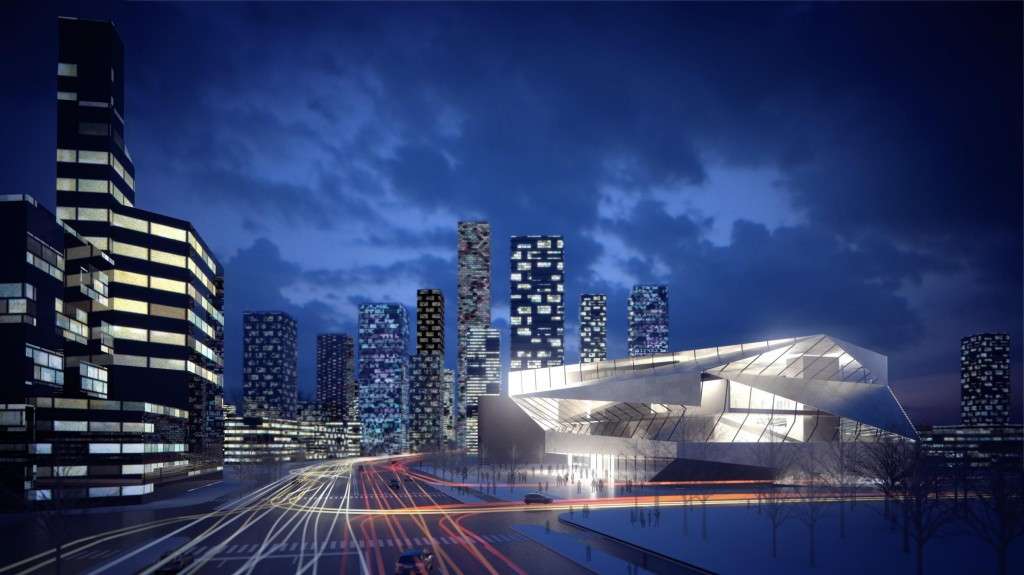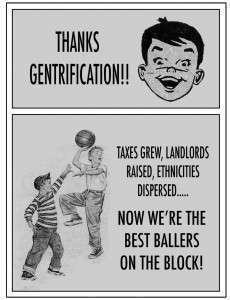
In high school, my youth group took a missions trip to West Virginia. As a bunch of kids from inner-city Philadelphia visiting the hills of coal country, we expected to find a sleepy little town that was a cross between Mayberry and a Norman Rockwell painting. We were in for a shock. In an old beat up church van, the pastor’s wife gave us a tour of the area they were ministering to around their church. She nonchalantly pointed out the local drug house—a trailer home on cinder blocks with no front door just like the drug houses in our neighborhood. She showed us the scene of a recent grisly murder–a jealous ex boyfriend had intentionally run a man over numerous times. In a field across from the church a man lived who everyone called “Blind Chicken.” He lived in this little shack during the summers and then every winter committed a crime to get locked up to stay out of the cold. “Blind Chicken” startled us city kids one day as he was cutting through the church’s yard heading back to his shack. He was shirtless, disheveled, with long greasy hair. He had an ax resting on his shoulder and thankfully didn’t seem to notice us. We couldn’t believe it—at least in Philly the homeless people don’t have axes. Apparently our city didn’t have a corner on drugs, crime and homelessness.
Were they doing urban ministry in rural West Virginia? I was starting to wonder.
In college, urban ministry was all the rage. The coolest, funniest speakers were often from the city. The most popular guys on campus said they wanted to plant churches in the city. We devoured and discussed the books on urban ministry. My senior year, a couple of my friends organized an “Urban Survey Trip” where we visited several churches and ministries in Philadelphia and New York. After I graduated from seminary, I took an urban missions class at one of Westminster Seminary’s satellite locations.
After college and seminary, I jumped back into serving at my local church here in North Philly. I spent the first few years at an office job, working mainly with our church’s youth group with the rest of my time. The last five years, I’ve been able to be full time as one of the pastors of the church. You could call the last eight years “urban” ministry: I’m raising my family and serving my church in the same low income neighborhood. My youth group is almost all un-churched kids. Our car has been stolen. I’ve been the victim of a violent crime, counseled drug addicts, and preached at quinceaneras. I’ve helped start and run a non-profit for our neighborhood that’s brought local businesses together and attracted some development to our area.
But I’m done calling this urban ministry. Here’s why:
1. Gentrification has muddied the urban ministry waters.
In the last ten to twenty years, upper middle class white people suddenly realized that it was a pain in the butt to drive an hour and half to work every day in the city. Then their children realized that buying a house and fixing it up in a low income inner city neighborhood was only slightly more expensive than living in their parent’s basement. Plus they thought that bare brick walls and re-purposed factories looked really cool with their skinny jeans and flannel shirts. And so, gentrification began. Coffee shops, artist studios and sky rocketing real estate prices have come to the city.
 America has really fallen in love with gentrification–foodies get their restaurants, developers get their business and politicians get their tax dollars. The only people who don’t love gentrification are the poor people living in the neighborhood before gentrification starts. Landlords jack up the rent because there’s higher paying customers waiting in the wings. Real estate taxes double and triple for people on fixed incomes. People in poor neighborhoods have actually started to band together and fight gentrification, to the point where an anti-gentrification advocate was recently accused of throwing a brick through the window of coffee shop that was bringing gentrification to a neighborhood here in Philly.
America has really fallen in love with gentrification–foodies get their restaurants, developers get their business and politicians get their tax dollars. The only people who don’t love gentrification are the poor people living in the neighborhood before gentrification starts. Landlords jack up the rent because there’s higher paying customers waiting in the wings. Real estate taxes double and triple for people on fixed incomes. People in poor neighborhoods have actually started to band together and fight gentrification, to the point where an anti-gentrification advocate was recently accused of throwing a brick through the window of coffee shop that was bringing gentrification to a neighborhood here in Philly.
This controversial trend matters because a lot of churches being planted in the city are planted in gentrified neighborhoods. You rarely hear about an exciting, booming church plant in a low income, high crime neighborhood. Upper middle class white people migrate back to the city and, lo and behold, suddenly the church has a burden for the city. Don’t get me wrong, gentrifying neighborhoods with hipsters need the gospel too. But isn’t it a little embarrassing for the evangelical church in America that we’re not burdened for a neighborhood until it gentrifies? It’s like a guy asking a girl out on a date right after she loses 75 pounds. I mean go ahead and do it bro, but you better have an explanation for why haven’t done it earlier, right? Why can’t we plant a church in a neighborhood before the politicians, developers and baristas get there? It’s great that we’re planting churches in the city, but it’s sad if we only do it once the upper middle class have displaced most of the poor.
As easy as it is to pick on hipsters, I’m not anti-gentrification. I don’t think Christians should be throwing bricks through coffee shop windows, but I also think we can plant churches in neighborhoods without coffee shops. I’m just saying that we should all get tired of the American church running after the upper middle class like a 6th grade boy who’s in love with the prettiest girl in the 8th grade. We don’t have to blindly, adoringly follow someone around who doesn’t even care that we exist. A lot of good churches moved out when white flight hit the big cities in the last twenty to forty years. Now that gentrification is bringing some of the middle class back, churches are getting started in those same neighborhoods again. One generation hates the city and sees the promised land of the American Dream in the green front lawns of the suburbs. The next generation thinks the suburbs are for phonies and old people. Sound theology and a love for people means that we put roots down that can withstand the shifting cultural winds. What would have happened if those same gospel preaching churches had stayed in those neighborhoods all along?
And yes, it cuts both ways–if my neighborhood gentrifies, then I’ll start loving and serving people with flannel shirts and horn rimmed glasses. (I don’t mind the coffee shops but I’ll skip the skinny jeans.) And to my brothers planting churches in gentrifying neighborhoods–plan to stay and prepare your church to stay regardless of the economic and cultural winds. If a sudden economic downturn brings minorities, illegal immigrants and section 8 housing to your neighborhood, let’s not run like last time.
If urban means a population with density, diversity and poverty–gentrified neighborhoods have only density and a very different diversity. Plus, (partially due to gentrification) poverty in the suburbs has been skyrocketing–jumping 67% from 2000 to 2011. And poverty in rural America continues to be a problem. More than ever–crime, drugs and poverty are everywhere. Someone might plant a church in the same city that I’m in, but they may be working with upper middle class young people in trendy coffee shops. The only coffee shop anywhere near my neighborhood is a dunkin donuts. Meanwhile, I might have a lot to learn from a brother in a rural or suburban area that is sacrificially and passionately serving the poor.
You can see what I mean about gentrification muddying up the term urban ministry.
Read the next post in this series: Part 2: Urban Ministry Is A Term for People Outside My Ministry

3 replies on “Why I’m Done with Urban Ministry (Part 1)”
Well Done! A brother in Christ and local church planter friend of mine here in Baltimore were having this same conversation the other day. So many church plants are popping up here in the city, but all in the gentrified areas; not the those areas that are riddled with poverty. It is good, sad, and misleading all at once. Good words, man! Grace.
Ricky, your racial bias may be showing. I agree that church plants are showing up in WHITE areas, but you overlook churches being planted by black folks. This is quite typical. Unless one is connected to black churches or looks for them in black areas, they are fairly invisible to the white folks. So your comment that they are ALL is gentrified areas is incorrect. I do agree with your emotional response to this writer.
Good job. Can’t wait for the second part. Of course we can always go to a coffee shop, sit down, and talk about it.